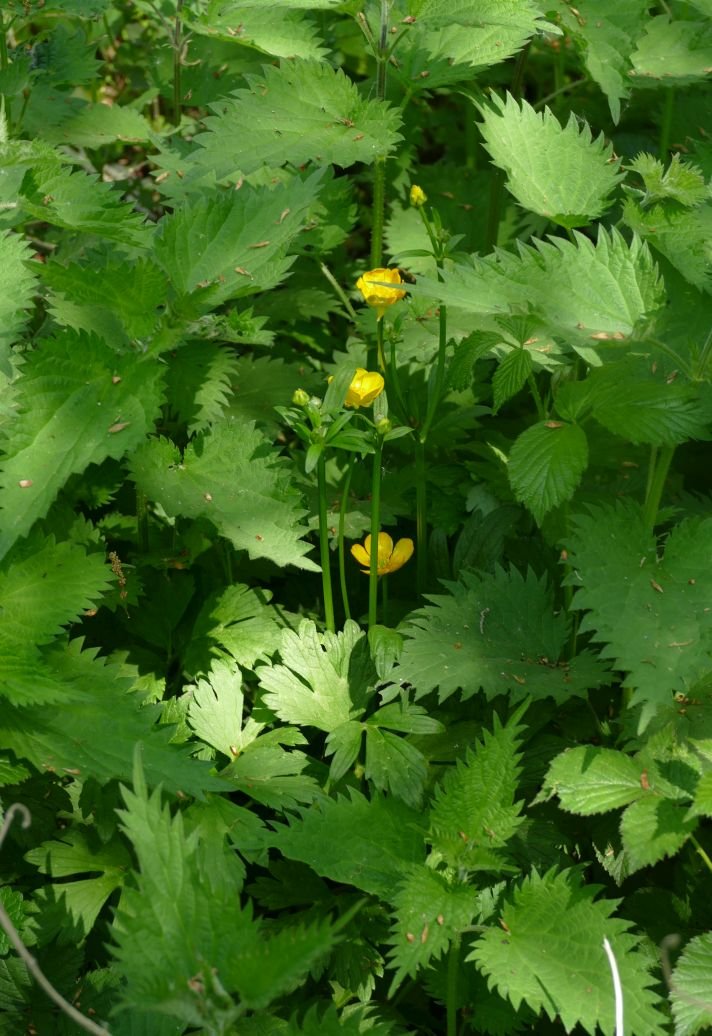Change of Management
With an ever growing image library, this blog was meant to be a comparison of spring 2020, 2021 and 2022, based on Terroir’s photographs of our favourite urban landscape, The Moors, near Redhill in Surrey. Those new to Terroir can catch up on the back story in Blogs 1, 11, 16, 31, and 54.
We discovered - the hard way - that unless you can indulge in fixed point photography and keep excellent records of camera settings, view points etc, taking and comparing before and after images can be at best frustrating and at worst, useless. Take a look at the disastrous attempt below!
Above: ‘before’ on the left (2020), and ‘after’ on the right (2022). Well, maybe that islet has moved, but as the photographer’s location and camera settings are different, it is impossible to verify!
The changes which were most obvious, however, were not those necessarily linked to seasonal variation. It was the changes which had occurred to this post industrial landscape over the (nearly) three year time span of the pandemic.
Here is what we found.
A hugely expanded clump of dogs mercury: usually regarded as an indicator species for ancient woodland; so good to see it not just hanging on, but now thriving.
During the pandemic, there has been little active maintenance and management at the Moors. This isn’t necessarily bad - just different. At the moment the wild flowers which thrive on the edge of hedgerows are blooming, providing a range of colour and form. The summer grassland flowers, however, may not be so copious this year as the scrub is slowly extending over the grassy verges, alongside the paths and cycle way. But already a healthy growth of young willowherb, and some spikes of common agrimony, pressage a blaze of pink and mauve, with yellow highlights, later on in the year.
From left to right - top row: common sorrel, common forget-me-not, and a young teasel
Middle row: red campion, bugle and white dead nettle
Bottom row: garlic mustard (the tangy leaves are delicious at this time of year), meadow buttercup and cuckoo flower/ladies smock, a lover of ditch sides and damp rough grassland.
Thankfully, the encroaching scrub is not without interest either: flowers, fresh foliage and tinges of red on some newly opened leaves are all welcome accessories to a late spring walk.
From left to right - top row: holly in flower, a sycamore sapling and an alder - the latter another wetland lover.
Bottom row: a wild rose, buddleia (a naturalising garden escape) and the soft, glossy leaves of young brambles
The blackthorn is over but other shrubs and trees are adding to the spring time vibe. And, as is usual these days, the May (hawthorn) is fully out in April.
From left to right - top row: hawthorn hedge in flower, elderflower and gean or wild cherry: with its straight branches, awkwardly angled from the trunk, the gean flowers always make me think of handkerchiefs on a washing line or stars on a Christmas tree.
Bottom row: willows, and a rogue horse chestnut complete with candle
Sadly, the ash dieback is very obvious (below).
Despite the lack of rain, water levels are still high, the main footpath/cycle way is still partly flooded and the seasonal wetlands are inundated. This excess of water is possibly why the swan pair have moved their nest; still close to the path but further to the west of last year’s location. A beady-eyed heron stands very close. We’ve not heard of herons taking eggs but they certainly eat ducklings and cygnets.
The brook itself has also changed. Some of the mature trees have been felled or partly felled, presumably for safety reasons, and more light is reaching sections of the water course. The partly felled ‘totem’ trees look bizarre but the organisms which will inhabit the slowly rotting wood will be a welcome addition to the area’s biodiversity.
The ‘offline’ balancing pond has turned a rusty brown colour - an algal bloom? - and there are traces of it along the edge of the shadier, slower flowing, sections of the stream (image below left). Some green waterweed still remains, however (below right), but the areas of yellow flag (centre) have extended enormously and will be spectacular later in the month.
We have given up on fixed point photography, but we will report back later in the year on how the Moors post-pandemic (is that tempting fate?) summer of 2022, compares with its lock down predecessors.
Changes to Terroir
Terroir blog had a long gestation period but eventually went live in October 2020. It was the perfect lockdown project and a weekly post seemed ideal. Thankfully, our life styles have changed and now that we are ‘learning to live with Covid’ we will be travelling more often and more extensively than we were able to, in the previous two summers. For the next six months at least, therefore, the Terroir blog will be appearing on a fortnightly basis. Blog 81 will appear as normal on Thursday 12th May but blog 82 will not be posted until Thursday 26th May. Further postings will follow at two week intervals.

































